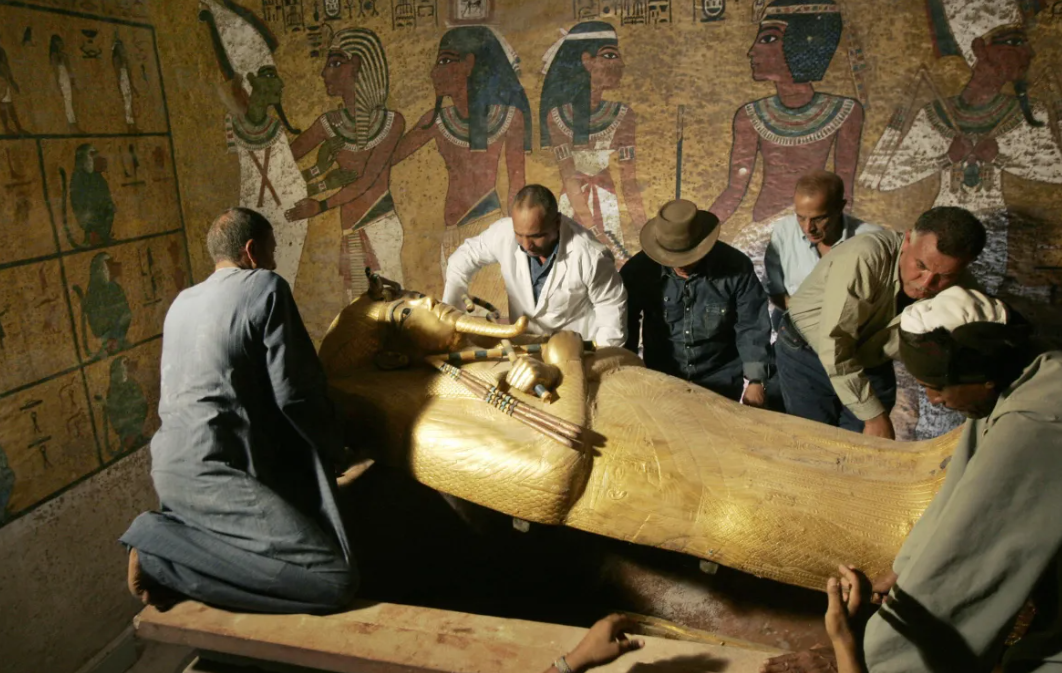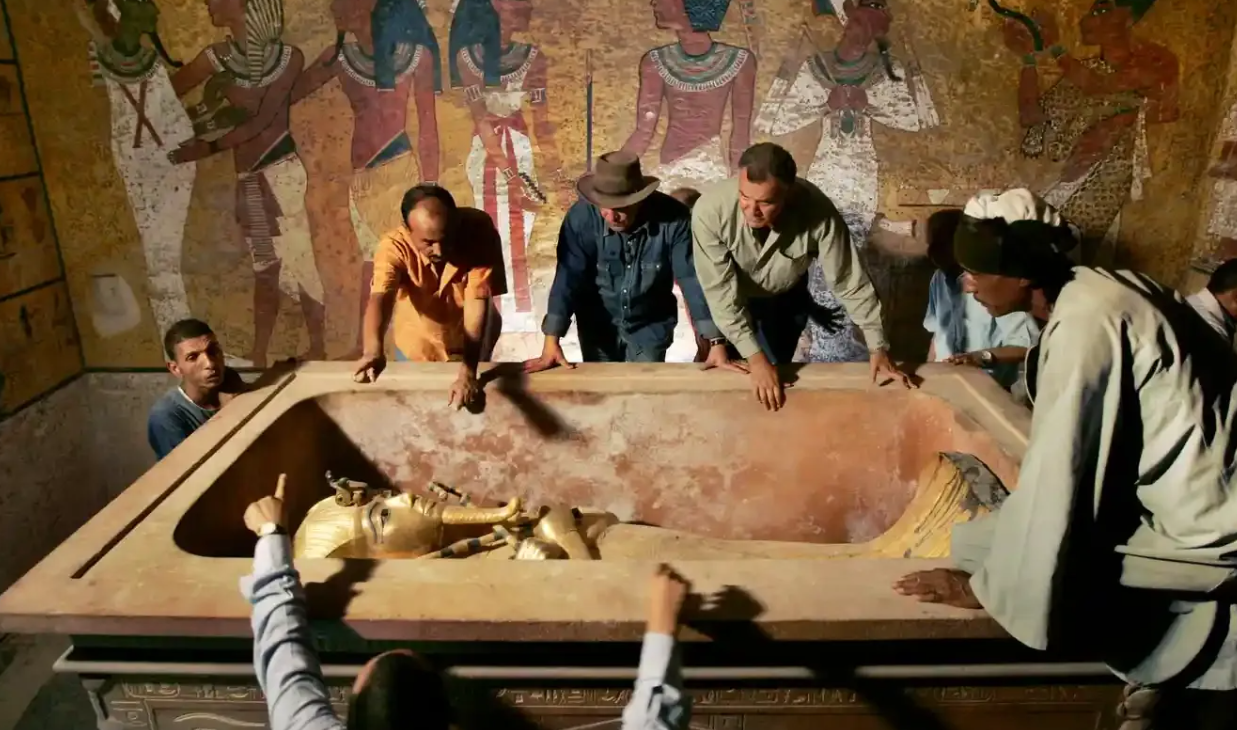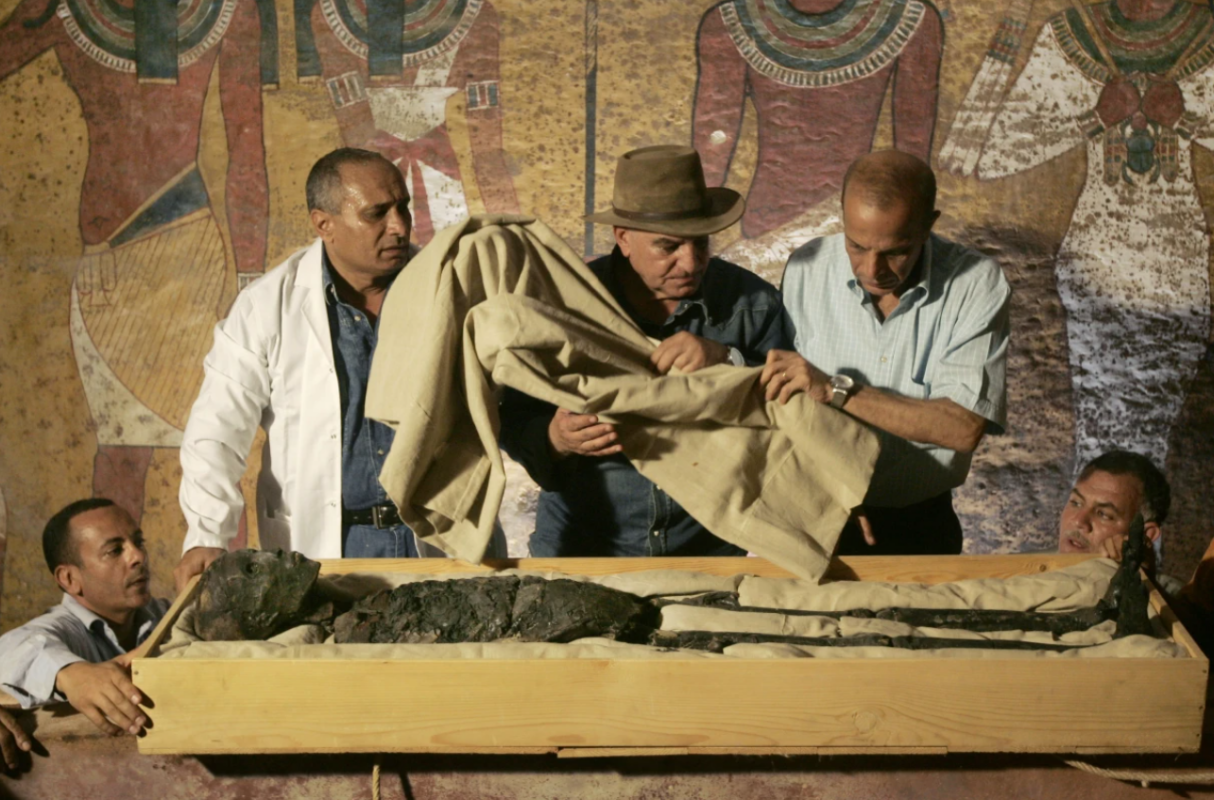The moment they opened King Tutankhamun tomb on November 4, 1922, marked a groundbreaking event in the history of archaeology. The tomb, located in Egypt’s Valley of the Kings, had been sealed for more than 3,000 years, protecting its treasures from time and looting. British archaeologist Howard Carter, after years of dedicated excavation and research, revealed the boy pharaoh’s burial place. archeology.dulichvn.net not only shed light on the life and death of King Tutankhamun but also provided an unprecedented glimpse into the grandeur of ancient Egyptian civilization.
The Search for King Tutankhamun
Howard Carter and the Valley of the Kings
Howard Carter’s relentless pursuit of Tutankhamun’s tomb began in the early 20th century, driven by a firm belief that the young pharaoh’s burial site remained undiscovered. The Valley of the Kings, known for housing the tombs of Egypt’s New Kingdom rulers, became the focal point of his search. Unlike many other archaeologists who believed the valley was thoroughly explored, Carter’s determination led him to meticulously survey the area.

Funding the Excavation
The search for King Tut’s tomb was not without challenges, especially financial ones. Carter received significant support from Lord Carnarvon, a British aristocrat passionate about Egyptian archaeology. Their partnership proved instrumental in sustaining the long and arduous excavation process. After years of limited progress, their persistence paid off in 1922 when Carter’s team uncovered the entrance to a previously unknown tomb.
Breaking the Sealed Doorway
On November 4, 1922, Carter and his team broke through the sealed doorway of the tomb. The moment was filled with anticipation as they peered into the dimly lit inner chamber. Carter’s iconic response to Lord Carnarvon’s query, “Can you see anything?””Yes, wonderful things”—captured the sheer magnitude of the discovery.
See more: 400-Year-Old Yew Tree at Muckross Abbey, Ireland
The Wonders Inside the Tomb
An Intact Burial Site
Unlike many other tombs in the Valley of the Kings, which had been looted over centuries, King Tutankhamun tomb was remarkably intact. This made it a rare and invaluable find in the field of archaeology. The tomb contained thousands of artifacts, all carefully arranged as they had been over three millennia earlier.

Priceless Artifacts
The treasures inside the tomb were breathtaking. Among the most notable items were:
- The Golden Death Mask: A symbol of King Tut’s legacy, the mask was crafted from solid gold and inlaid with precious stones. It remains one of the most iconic artifacts of ancient Egypt.
- Chariots and Weapons: These items showcased the pharaoh’s status as a warrior king and reflected the sophistication of ancient Egyptian craftsmanship.
- Jewelry and Amulets: The tomb housed an array of intricately designed jewelry, indicating the wealth and opulence of the time.
- Furniture and Everyday Items: From thrones to ceremonial beds, the tomb’s contents offered a comprehensive view of royal life during Tutankhamun’s reign.
The Mummy of the Boy King
At the heart of the discovery lay the mummy of King Tutankhamun himself, preserved in an elaborate sarcophagus. The condition of the mummy provided crucial insights into ancient Egyptian embalming techniques. However, the mystery surrounding the young pharaoh’s death deepened as forensic studies raised questions about possible injuries, illnesses, or foul play.
See more: Exploring the Unique Charm of Little Moreton Halls Wonky Fireplace
The Impact on Archaeology and Egyptology
Insights into Ancient Egypt
The artifacts and treasures unearthed in Tutankhamun’s tomb offered an unparalleled understanding of ancient Egyptian culture, burial practices, and artistry. The discovery illuminated the spiritual beliefs of the Egyptians, particularly their views on the afterlife and the importance of preserving the deceased for eternity.

A Cultural Phenomenon
The discovery of King Tutankhamun’s tomb sparked global fascination. Exhibitions showcasing the treasures of Tutankhamun toured the world, captivating millions and elevating public interest in ancient Egypt. The “Tut-mania” phenomenon influenced art, fashion, and literature in the decades following the excavation.
Conservation and Ethical Considerations
The excavation also brought attention to the need for preserving archaeological sites and respecting cultural heritage. Modern archaeologists continue to study the artifacts from King Tut’s tomb, employing advanced technologies to ensure their preservation for future generations.
Legacy of the Discovery
Howard Carter’s Enduring Fame
The discovery of King Tutankhamun’s tomb cemented Howard Carter’s legacy as one of the most renowned archaeologists in history. His meticulous approach to excavation set new standards for archaeological practices.

King Tutankhamun: A Symbol of Ancient Egypt
King Tutankhamun, once a relatively obscure pharaoh, became a global icon representing the magnificence of ancient Egypt. His treasures continue to inspire awe and remain a cornerstone of Egyptology.
Conclude
Despite the wealth of information uncovered, questions about King Tutankhamun life and death persist. Ongoing research and discoveries ensure that his story continues to captivate scholars and enthusiasts alike.
In conclusion, the discovery of King Tutankhamun tomb on November 4, 1922, remains one of the most extraordinary achievements in the history of archaeology. The treasures and insights it revealed have profoundly enriched our understanding of ancient Egyptian civilization and continue to inspire wonder a century later.

CÁC TIN KHÁC
Mary Walton: The Forgotten Inventor Who Helped Clean Up America’s Cities
Tomb of Queen Nefertari in the Valley of the Queens, Egypt
Discover the Hypostyle Hall of the Temple of Hathor at Dendera
Venus de Losange: Unveiling the Mystery of a 20,000-Year-Old Paleolithic Icon